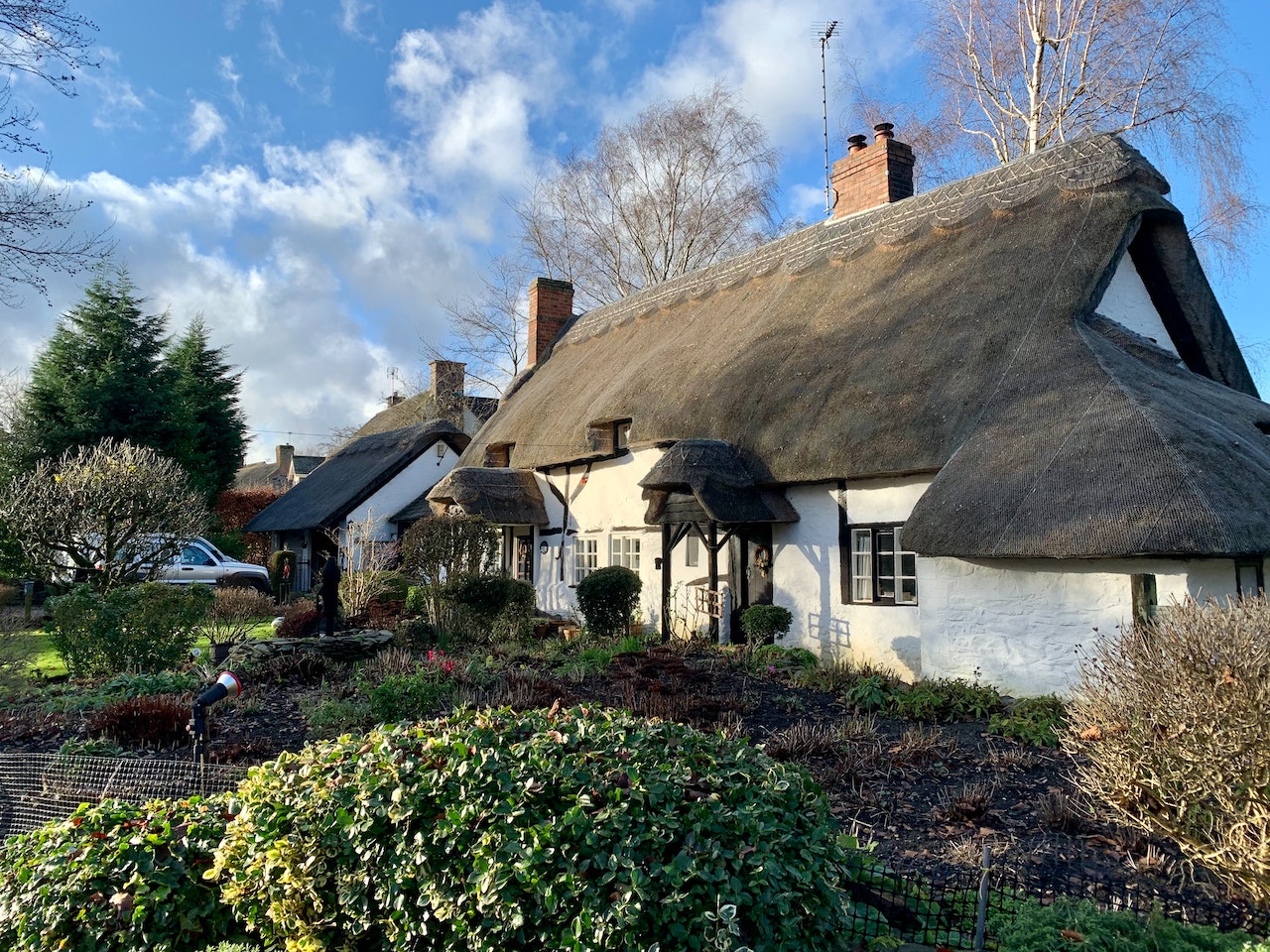How Does a Thatched Roof Work?
Thatched roofs are synonymous with the British countryside and have a unique appearance with gentle swoops and rolls that are distinctively beautiful. The natural reeds are dried and installed precisely to create a waterproof layer.
The thatch can be made from several materials, but it is usually water reed, lasting up to sixty years if properly maintained. Traditionally, farmers would use any available resources such as rye, oat or barley straw. But how does a thatched roof work?
How Is a Thatched Roof Constructed?
Although a thatch could look like a random layer of straw, it is carefully constructed with a structure underneath that supports the weatherproof thatching.
The structure is normally built with timber rafters and battens, with the first layer of thatch fastened to the frame. Modern thatchers use fasteners such as metal or plastic fixings rather than the original twine.
Above this first layer, the thatcher builds the main coat, beginning methodically from the eaves and working up to the ridge. Bundles overlap and mean the water runs off rather than penetrating the thatch.
Thatchers fit roofs using a horizontal and then a vertical layer covering the whole roof. Finally, they build ridges with long thatching rolls bound together and installed as a seamless line.
How Does a Thatched Roof Work?
Thatched roofs can be created in a wide range of shapes and structures, lifting over windows and doorways and with rounded, gentle corners.
Water reeds are naturally waterproof, with a hollow centre that keeps water out with a tight cell layer. Bundled reed is impenetrable, and the thatch cannot absorb water by more than an inch or two.
Reeds are usually bundled in five to six-foot blocks, with layers 12 inches thick that are safeguarded against snow, sleet, and rain.
Thatches are cool in the summer but warm in winter and do not require attic insulation since they do not trap moisture and heat inside the loft space.
What Materials Can a Thatched Roof Be Made From?
There are several possible thatching materials, although reed is the most popular since it is durable. Also known as Norfolk Reed, it can last for decades if installed correctly and maintained.
Some water reed is imported, primarily from Eastern Europe, although some thatchers use locally sourced raw materials.
Straw Thatches
Straw is very traditional and reasonably long-lasting, although it needs replacing every 15 to 20 years. Well-maintained straw thatches can sometimes last twice that.
The straw bundles are waterproof, UV resistant, environmentally friendly and provide good ventilation.
Reed Thatches
Reed is popular, readily available and rustic in appearance. The material is sustainable and waterproof, providing a visually attractive roof resistant to water and UV rays.
Other Thatching Materials
Roofs can also be thatched with rush, heather, palm and rye straw. Although these heritage materials can work, they tend to be less efficient. Listed properties and those with protected status may use an old-fashioned thatching material in line with property ownership conditions.
How Does a Thatched Roof Material Affect Performance?
The thatching material will affect the performance of the roof. All are waterproof and suitable as a roofing material but will vary in terms of longevity, application technique and style.
Roofers will select materials depending on the location and size of the property and the insulation requirements. Water reed, combed wheat reed and straw are more commonly used.
Water reed is ideal for new roofing constructions since it produces sharper lines and straight edges.
Pros and Cons of Thatched Roofs
A thatched cottage is an aspiration for many who dream of idyllic countryside living. There are pros and cons to be aware of if you are considering buying a property with a thatched roof or want to incorporate a thatch into your home design.
Advantages of Thatched Roofs
- Eco-friendly: thatch is a natural product grown and harvested in farming industries and is highly sustainable.
- Insulation: thatches are great for insulation and keep homes warm when the weather is cold and cool during the summer. The improved insulation can save on heating costs.
- Durability: a professionally fitted thatched roof can last for decades. The expected lifespan of a roof depends on the materials used and the skill of the thatcher.
- Appearance: thatch ages nicely and settles into a natural shape, blending into the local landscape as it matures. Modern materials such as brick, slate or glass can appear cold, offset by a charming, soft thatch to make a property appealing.
Disadvantages of Thatched Roofs
- Installation cost: thatching is labour intensive and can cost more than a conventional roofing method where much of the materials are cut mechanically.
- Fire safety: homeowners with a thatched roof should take appropriate precautions to ensure the thatch isn't exposed to fire. Fire retardant applications are one option; a water-based solution produced as a binder protects a thatch from fire risks.
- Maintenance: thatched roofs must be maintained to stay looking their best. The upkeep depends on whether the roof is exposed to shade, sun, extreme weather and pollutants, and the material used. Thatch can begin to decay if the environment is warm and wet - thatchers can recommend products that prevent rot and repel bacteria growth.
- Insurance: some insurance providers will charge a higher price for buildings insurance because thatch is a higher fire risk than a tiled roof. You can reduce the premium by installing fire retardant measures or treatments.
The natural materials in a thatched roof can raise environmental considerations, too. Overhanging trees must be cut back because branches impeding the roof can cause the thatch to dry out and become a greater fire risk, and it is possible to find that animals and birds want to make their home in the thick layer of reed.
Re-thatching a roof normally takes around six to eight weeks, although this can be delayed in poor weather conditions. Professional thatchers will advise on the right materials and installation techniques to ensure your thatch lasts as long as possible.
Scheduling routine inspections and repairs will ensure that the roof does not develop any leaks, which normally appear around the corners or ridge when an older thatched roof slowly shows signs of wear and tear.
Get a roof replacement quote
See how we work below.

1. Tell us some details of exising roof
Tell us the details of your existing roof and the work you would like done to it.
2. Tell us your UK address
We have a national network of roofers around the United Kingdom. Whether you are in Scotland or London, we can help.
3. Recieve a no obligation quote
You'll receive up to 4 no-obligation quotes and have a better idea of the roof replacement cost.


